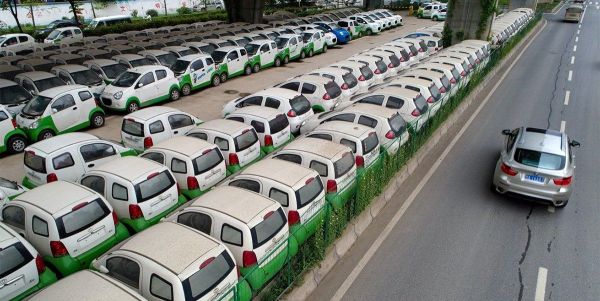China’s Ministry of Industry and Information Technology on Tuesday released its 15-year EV plan. The “draft development” plan sets a target for EVs to account for 25% of annual new light-vehicle sales by 2025 — with no targets specified beyond that year. That’s up from the 20% goal it set two years ago. But Beijing plans to continue phasing out consumer incentives. Instead, it will create EV quotas for carmakers to meet.
In a move that mirrors California’s ZEV mandates, China will force automakers to increasingly produce EVs as part of its “carbon credit program”.
In China’s carbon-credit program, carmakers this year must earn a number of credits equivalent to 10% of their annual output. The rate will increase to 12% next year. EVs get between two and five credits based on range, with a longer range earning more credits. Plug-in hybrids get two carbon credits.
In California’s ZEV program, the number of credits does not directly relate to the percentage of sales. The state’s most recent assessment estimates automakers will need to reach less than 8% ZEV sales by 2025 to meet the 22% ZEV credit requirement.

Shifting the burden from Beijing to global automakers
Under China's new plan, the burden will likely fall on global automotive brands rather than domestic Chinese automakers — or by using government coffers to pay incentives.
General Motors last year criticized California's approach. Now it appears that GM and other global automakers will face similar requirements in China.
This Week In Asia said that most of China's 169 domestic carmakers — producing low-quality vehicles — are making EVs. So they can meet the quota. But the big global automakers also producing gas cars will be forced to meet the quota or buy credits from EV producers.
In other words, foreign automakers making gas cars will subsidize indigenous China EV makers.
When China slashed government subsidies for EVs by about 60% in June, the results were predictable. Sales of so-called new-energy cars, a category that includes plug-in hybrids, fell by 28%, according to the Wall Street Journal. Reuters reported that the drop this October versus a year ago was 45.6%.
Automotive News China reported that China's plan is to wind down the incentive program by the end of 2020.
Meanwhile, Tesla today secured electric-vehicle subsidies for Model 3s from the Chinese government. It's not yet clear how much the subsidy will be.
Source of information: Electrek
